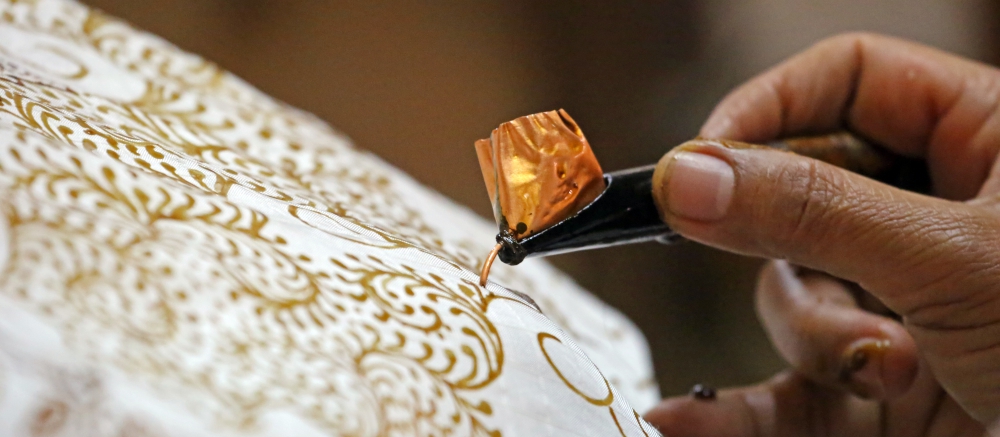Batik is perhaps one of the most popular and influential Indonesian art forms that bring a big impact toward the development of Indonesian creative industry. Most Indonesians grow up with batik, so they are familiar with the design and its production process. Students and public servants alike wear batik on a certain day to show their identity as an Indonesian because, along with Indonesian language, batik becomes a media to unite Indonesian people.
The history and the origin of batik itself can be traced back to centuries ago and to other civilizations. Indonesia was once an important trade region for other nations such as China, India, and the Middle East, so the traditions, cultures and arts of Indonesia were heavily influenced by those nations. All of those cultures, traditions and arts that were introduced by the nations were assimilated into Indonesian cultures, making Indonesia a huge melting pot where cultures, traditions and arts were absorbed, and batik is one of the products of the assimilation process.
While there is no conclusive evidence that pinpoints the exact origin of batik, the traditional tool required to make batik, canting, was believed already existed in the 12th century in Indonesia, so it is possible that batik had already been produced before the 12th century. The technique of dye resisting decoration was also found in other nations such as India and China, so there is also a chance that batik was also influenced by those nations.
To make a traditional batik, batik craftsmen or craftswomen usually use canting, a pen-like instrument made from copper with a wooden handle, to draw the design of batik on a cloth. Making batik using canting, however, is time-consuming as the craftsmen and craftswomen must draw a complex and detailed ornament on the cloth by only using canting. To solve the limitation and to meet demand, they create an invention called cap, a copper stamp, that allows them to print the ornament of batik on the cloth, making the process of the production of batik easier and faster, albeit reducing its artistic value.
Now with the rapid development of Indonesian creative industry, batik plays a central role in introducing Indonesian traditional and contemporary craft to the world. Many designers and artists incorporate batik into their works, developing even further the concept and the legacy of batik. In Gloya, we apply many batik ornamentations to our products as we want to promote the culture and art of Indonesia to the world. One of our products that use batik pattern is Grompol Music Box. We incorporate grompol pattern into the music box, making the craft rich with Javanese traditional values. With the help of creative and skillful Indonesian people, we believe batik will grow even stronger than before and can inspire the whole world with its wonderful ornamentation.
